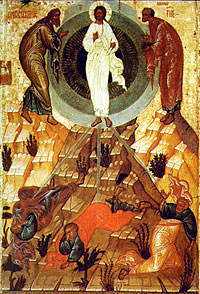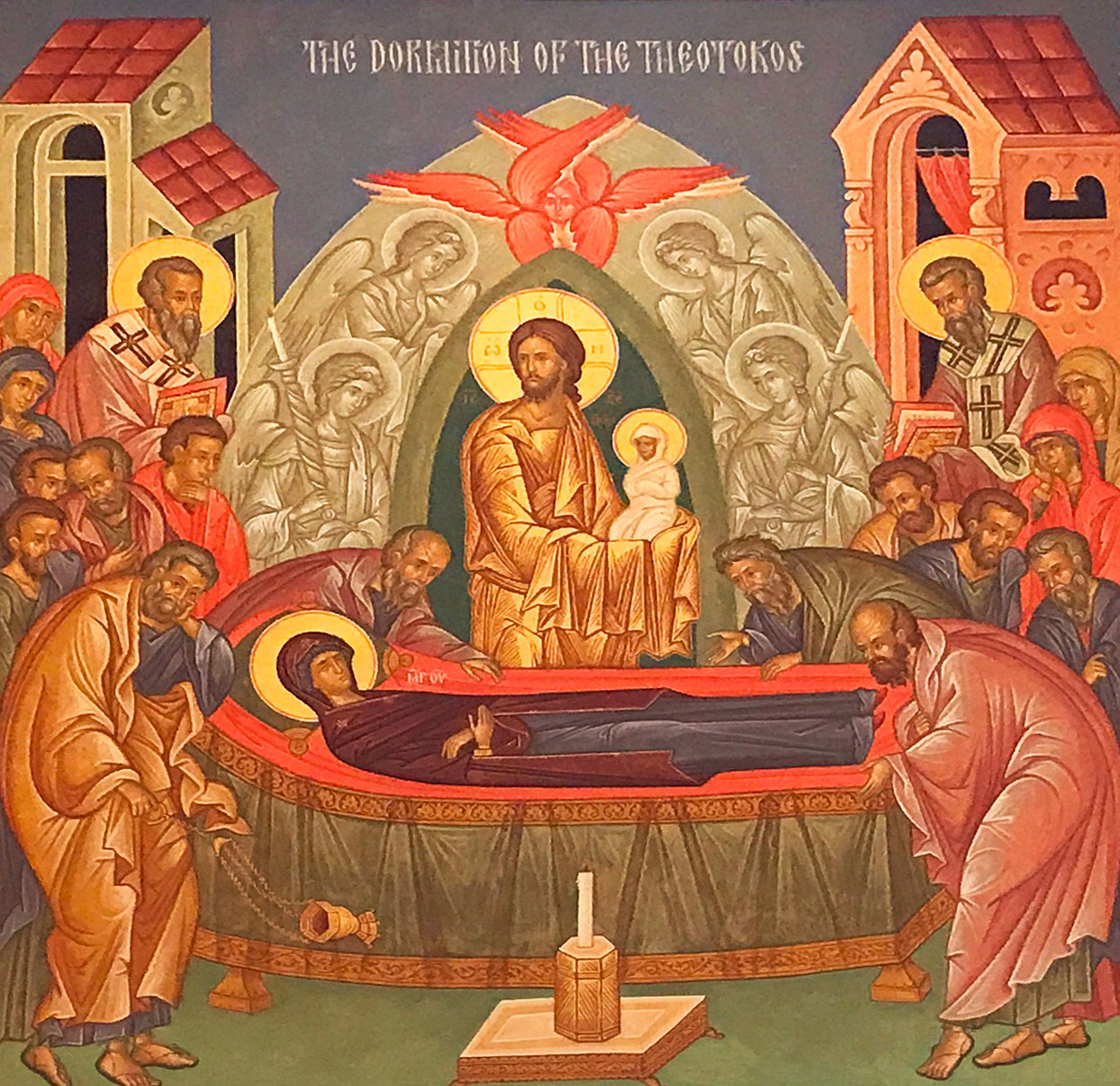
In the reading from 2 Peter for the feast of the Transfiguration, St. Peter himself insists that the apostolic teaching concerning Jesus Christ is not a matter of myth or fable or some sort of cunning religious scam. The apostles are not con-artists. They are eyewitnesses to the power and majesty of the Lord Jesus Christ. They saw what they saw — and they heard what they heard — on Mount Tabor and they have shared their testimony with those willing and able to receive it. They have shared their testimony so that even though time and the years may pass, the truth about Jesus Christ will be firmly established for believers.
Believers – those who receive the testimony of the apostles (and this includes us) — have treasured the apostolic words concerning Christ as a consolation and inspiration in the face of anxiety and persecution and the passing of time. The apostle says to us: hold on to these words, hold on to what we have witnessed and shared with you, hold on to the revelation of the light and glory and majesty revealed in Christ — until the day of His coming again and your faith and trust are vindicated and He is clearly and openly seen and known.
The world can sometimes be a very dark place and even our inner life can also be filled with darkness. This glimpse of glory on Mount Tabor, together with all the other revelations of the Lord’s glory, and ultimately of His resurrection, are tokens of God’s love and beauty, His majesty and power, of His Kingdom which is to come. These are things mostly hidden in this world but manifested to — and experienced by — believers in wonderful moments when what is anticipated is given to us in a small, deep and intimate gift, as a foretaste of the joy to come.
I find the time between the feast of the Transfiguration and the feast of the Dormition to be very rich in the interplay of crucial spiritual themes. Both are feasts of death. The first comes before the death of Christ and anticipates it. The second commemorates death, and comes after the death and resurrection of Christ. The Transfiguration was a gift to the disciples Peter, James and John in anticipation of the suffering and death of the Lord. It was meant to give them something – some hope – to see them through their experience of Holy Week, in order to strengthen them in the face of the death of their Master. “Thy disciples beheld Thy glory as far as they could see it; so that when they would behold Thee crucified, they would understand that Thy suffering was voluntary….” (Kontakion)

—Fr. Andrew Morbey
The August Fast
The first two weeks of August are set aside as a time of special “protected” time of the year. As Great Lent prepares for the celebration of Easter and Pentecost and the Fast of Advent anticipates the feasts of Christmas and Theophany, this fast centers around the celebration of the Feasts of the Transfiguration of Christ and the Dormition of the Theotokos.
Looking at these feasts we see why the Church highlights this time as a special season of celebration. Christmas and Theophany proclaim the presence of Christ in the world, His historic coming in the flesh Easter and Pentecost celebrate the fulfilled purpose of His coming: the presence of the Holy Spirit by the power of Christ’s resurrection. The feasts of Transfiguration and Dormition show us how this resurrection life will be realized for us in human flesh in the glorification of our bodies after the model of the transfigured Christ, a glorification already bestowed on the Theotokos because of her unique role in the salvation of humanity.
It is this physical glorification which we celebrate in the two Great Feasts of August. On the feast of the Transfiguration we look on the glorified body of Christ, the model of our future risen bodies. On the feast of the Dormition we celebrate Mary’s glorification and realize that already one of our race shore in that transfiguration which awaits us all in the kingdom to come.
As with the Church’s other feast seasons, there are several special liturgical observances associated with this time of celebration:
Water Blessing (August 1) — A special service to the Theotokos is held to begin the season. Water is blessed, a frequent sign of transfiguration in Christ. As Christ (the cross) comes in contact with the water, it is transformed into a sign of His presence. We drink this water in anticipation of our complete transformation which we are celebrating in these days.
Transfiguration (August 6) — The blessing of grapes, as well as other fruits and vegetables on this day is the most beautiful and sign of the final transfiguration of all things in Christ. It signifies the ultimate flowering and fruitfulness of all creation in the paradise of God’s unending Kingdom of Life where all will he transformed by the glory of the Lord.
Dormition (August 15) — herbs and flowers are blessed on this day, recalling the tradition that a sweet fragrance filled the empty tomb of Mary when it was first opened.


 St. Nicholas Orthodox Church is a parish of the Orthodox Church in America in San Anselmo, CA.
St. Nicholas Orthodox Church is a parish of the Orthodox Church in America in San Anselmo, CA.